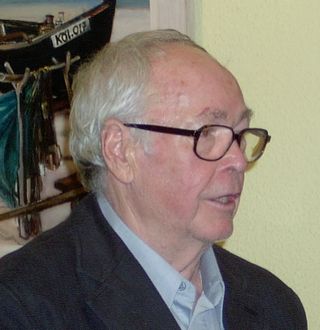
The Bundestag is the German federal parliament. It is the only federal representative body that is directly elected by the German people. It is comparable to the United States House of Representatives or the House of Commons of the United Kingdom. The Bundestag was established by Title III of the Basic Law for the Federal Republic of Germany in 1949 as one of the legislative bodies of Germany and thus it is the historical successor to the earlier Reichstag.

Mitte is the first and most central borough of Berlin. The borough consists of six sub-entities: Mitte proper, Gesundbrunnen, Hansaviertel, Moabit, Tiergarten and Wedding.

Tiergarten is a locality within the borough of Mitte, in central Berlin (Germany). Notable for the great and homonymous urban park, before German reunification, it was a part of West Berlin. Until Berlin's 2001 administrative reform, Tiergarten was also the name of a borough (Bezirk), consisting of the current locality (Ortsteil) of Tiergarten plus Hansaviertel and Moabit. A new system of road and rail tunnels runs under the park towards Berlin's main station in nearby Moabit.

The Kunstsammlung Nordrhein-Westfalen is the art collection of the German Federal State of North Rhine-Westphalia, in Düsseldorf. United by this institution are three different exhibition venues: the K20 at Grabbeplatz, the K21 in the Ständehaus, and the Schmela Haus. The Kunstsammlung was founded in 1961 by the state government of North Rhine-Westphalia as a foundation under private law for the purpose of displaying the art collection and expanding it through new acquisitions.

Marie-Elisabeth Lüders was a German politician and women's rights activist.
Georges Adéagbo is a Beninese sculptor known for his work with found objects.

Marie Juchacz was a German social reformer.

The Checkpoint Charlie Museum is a private museum in Berlin. It is named after the famous crossing point on the Berlin Wall, and was created to document the so-called "best border security system in the world". On display are the photos and related documents of successful escape attempts from East Germany, together with the escape apparatus: hot-air balloons, getaway cars, chairlifts, and a mini-U-boat. The museum researches and maintains a list of deaths at the Berlin Wall. It is operated by the Mauermuseum-Betriebs gGmbH, and the director is Alexandra Hildebrandt.

Walter Womacka was a German Socialist Realist artist. His work was pioneering early German Democratic Republic (GDR) aesthetics.
Stephan Braunfels is a German architect.
Gregor Schneider is a German artist. His projects have proven controversial and provoked intense discussions. In 2001, he was awarded the Golden Lion at the Venice Biennale for his infamous work Totes Haus u r exhibited at the German Pavilion.

White Crosses is a memorial for those who died during the Cold War at the Berlin Wall. It is located at the shore of the river Spree in Berlin next to the Reichstag building, which houses the German parliament. Established by the private group Berliner Bürger-Verein on the 10th anniversary of the Berlin Wall in 1971 it was first located east of the Reichstag on a fence directly in front of the wall. After the German reunification in 1990 it kept its location until construction of the new government buildings next to the Reichstag was started at the end of that century – Berlin was chosen to be the new capital of Germany.

Haus Vaterland was a pleasure palace on the south-east side of Potsdamer Platz in central Berlin. Preceded by Haus Potsdam, a multi-use building including a large cinema and a huge café, from 1928 to 1943 it was a large, famous establishment including the largest cafe in the world, a major cinema, a large ballroom and numerous theme restaurants, promoted as a showcase of all nations. It was partially destroyed by fire in World War II, reopened in a limited form until 1953, and was finally demolished in 1976.

The Reifenstein schools were the various schools of higher education for women associated with the Reifensteiner Verband.

Olga Segler was a German woman who died of injuries as a result of crossing the Berlin Wall.

Katharina Grosse is a German artist. As an artist, Grosse's work employs a use of architecture, sculpture and painting. She is known for her large-scale, site-related installations to create immersive visual experiences. She has been using an industrial paint-sprayer to apply prismatic swaths of color to a variety of surfaces since the late 1990s, and often uses bright, unmixed sprayed-on acrylic paints to create both large-scale sculptural elements and smaller wall works.

Ben Wagin was a German artist, sculptor, draughtsman, designer, performance artist, author and composer. He ran the Galerie S gallery, and founded the artists' group die Baumpaten which planted trees in cities. He created the installation The Parliament of Trees in Berlin.

Berlin's Federal Ribbon is an architectural ensemble that runs across the government district north of the Reichstag building across the Spreebogen on the edge of the Spreebogenpark. The concept was designed by the architects Axel Schultes and Charlotte Frank.


















